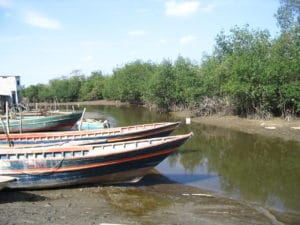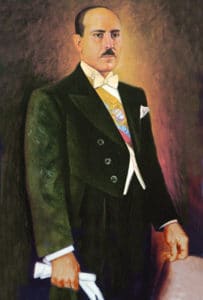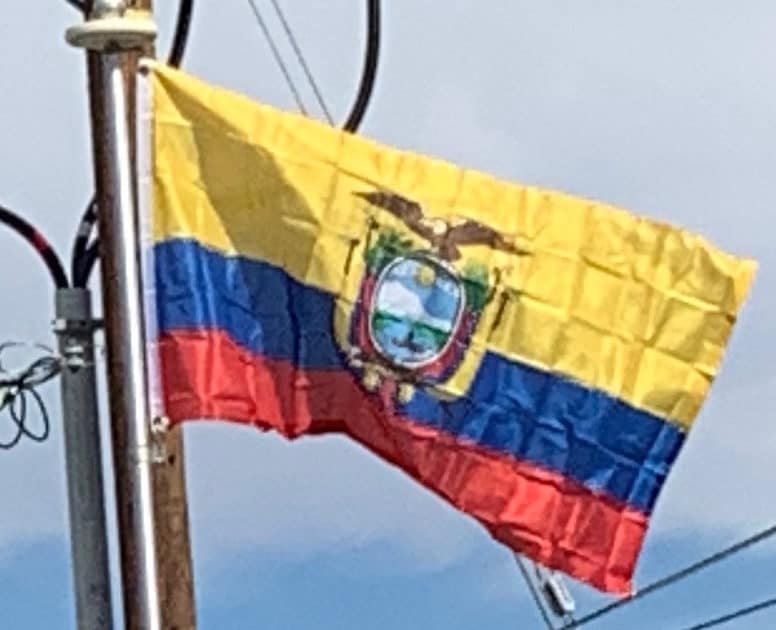Four years later in 1941, amid fast-growing tensions within disputed territories around the Zarumilla River, war broke out with Peru. Peru claimed that Ecuador’s military presence in Peruvian-claimed territory was an invasion; Ecuador, for its part, claimed that Peru had recently invaded Ecuador around the Zarumilla River and that Peru since Ecuador’s independence from Spain has systematically occupied Tumbez, Jaen, and most of the disputed territories in the Amazonian Basin between the Putomayo and Marañon Rivers. In July 1941, troops were mobilized in both countries. Peru had an army of 11,681 troops who faced a poorly supplied and inadequately armed Ecuadorian force of 2,300, of which only 1,300 were deployed in the southern provinces. Hostilities erupted on July 5, 1941, when Peruvian forces crossed the Zarumilla river at several locations, testing the strength and resolve of the Ecuadorian border troops. Finally, on July 23, 1941, the Peruvians launched a major invasion, crossing the Zarumilla river in force and advancing into the Ecuadorian province of El Oro.

During the course of the Ecuadorian–Peruvian War, Peru gained control over part of the disputed territory and some parts of the province of El Oro, and some parts of the province of Loja, demanding that the Ecuadorian government give up its territorial claims. The Peruvian Navy blocked the port of Guayaquil, almost cutting all supplies to the Ecuadorian troops. After a few weeks of war and under pressure by the United States and several Latin American nations, all fighting came to a stop. Ecuador and Peru came to an accord formalized in the Rio Protocol, signed on January 29, 1942, in favor of hemispheric unity against the Axis Powers in World War II favoring Peru with the territory they occupied at the time the war came to an end.
The 1944 Glorious May Revolution followed a military-civilian rebellion and a subsequent civic strike which successfully removed Carlos Arroyo del Río as a dictator from Ecuador’s government. However, a post-Second World War recession and popular unrest led to a return to populist politics and domestic military interventions in the 1960s, while foreign companies developed oil resources in the Ecuadorian Amazon. In 1972, construction of the Andean pipeline was completed. The pipeline brought oil from the east side of the Andes to the coast, making Ecuador South America’s second largest oil exporter. The pipeline in southern Ecuador did nothing to resolve tensions between Ecuador and Peru, however.

The Rio Protocol failed to precisely resolve the border along a little river in the remote Cordillera del Cóndor region in southern Ecuador. This caused a long-simmering dispute between Ecuador and Peru, which ultimately led to fighting between the two countries; first a border skirmish in January–February 1981 known as the Paquisha Incident, and ultimately full-scale warfare in January 1995 where the Ecuadorian military shot down Peruvian aircraft and helicopters and Peruvian infantry marched into southern Ecuador. Each country blamed the other for the onset of hostilities, known as the Cenepa War. Sixto Durán Ballén, the Ecuadorian president, famously declared that he would not give up a single centimeter of Ecuador. Popular sentiment in Ecuador became strongly nationalistic against Peru: graffiti could be seen on the walls of Quito referring to Peru as the “Cain de Latinoamérica”, a reference to the murder of Abel by his brother Cain in the Book of Genesis.
